DNR Parks And Recreation News
What’s Happening In Wisconsin's State Parks,
Trails, Forests And Recreation Areas
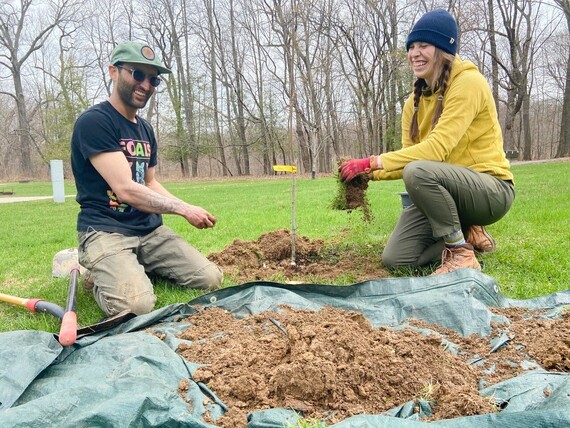 Keeping trees in our state parks, forests, trails and recreation areas healthy is a team effort! Devil’s Lake Climbing Guides annually plants trees at Devil’s Lake State Park. If your business or organization is interested in getting involved with tree health protection efforts at a park property near you, contact the property manager directly. / Photo credit: Nick Wilkes, Devil’s Lake Climbing Guides
Today on Arbor Day, we celebrate and recognize the importance of trees. Imagine what our state parks would look like without trees, or what we would do without our state forests. Many of our state trails are lined by trees every shape, size and color. And a treeless Ice Age Trail? Inconceivable!
Not only do trees define our landscape, they provide countless ecological, environmental, health and cultural benefits. In our state parks, forests and recreation areas, trees provide the wood for our campfires, networks for trails, shade on hot days while we’re hiking or biking, habitat for birds when we’re birdwatching and inspiration for painting, drawing and photographing our protected places. Tree health affects our campgrounds, picnic areas and trails.
Trees across state are facing threats from invasive species, like emerald ash borer, and diseases, like oak wilt. Friends groups, local businesses, school groups and other partner organizations are working hard to help protect and plant trees at our park properties.
To slow the spread of harmful pests and diseases, such as emerald ash borer, oak wilt and others, here are a few things you can do when you're visiting our state park system this summer:
- Buy and use firewood locally. If you are a camper visiting from outside of Wisconsin, please do not bring firewood with you. If it originated from more than 10 miles from the state campground and isn’t certified, you will have to surrender it before checking into your campsite.
- Wisconsin’s statewide firewood rule prohibits bringing firewood onto any state property from more than 10 miles away or from areas within the spongy moth quarantine. Due to the spongy moth quarantine, movement of firewood is also prohibited from quarantined into non-quarantined counties. Visit the DNR's firewood page for more information.
- Buy certified firewood at state properties, retail locations or directly from firewood dealers. Most parks have a Friends group that sells quality firewood. Proceeds help to pay for educational programs, buildings, picnic shelters, needed equipment and other park projects.
- Burn all firewood during your camping trip. Do not take it with you when you leave or leave any unused wood behind.
- Look for firewood that is dry with either no bark or loose bark. Emerald ash borer larvae live beneath the bark and can survive for up to two years on dead wood.
- Consider using gas or charcoal instead of firewood.
- Explore new nighttime activities like stargazing or viewing wildlife by flashlight.

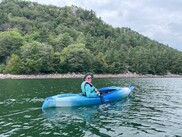
Paddle, Hike And Explore Wisconsin With A Natural Resources Foundation Field Trip
The Natural Resources Foundation of Wisconsin is a nonprofit that supports the wonders of Wisconsin’s lands, waters and wildlife through conservation, education, engagement and giving.
This year is the 30th season of Natural Resource Foundation Field Trips, and more than 260 trips are scheduled from April through early November. Field trips are expert-led adventures that explore Wisconsin in a variety of ways, from easy paddling in Door County to steep, off-trail hiking in Green County. These trips often offer a behind-the-scenes look at resources not open to the public.
Field trip opportunities include:
- Insects After Dark: Baraboo Hills
- Canyons & Savannas of Rocky Run State Natural Area
- Behind the Scenes Tour of a Wildlife Hospital
- Climate Smart Forestry in Action
The entire field trip list is available in the Field Trip Guidebook. Each trip is labeled to indicate the physical demand and if it is family-friendly. The annual tradition is open for all ages and abilities, including 26 trips accessible for standard wheelchairs.
Registration is only available online and is only open to for Natural Resources Foundation members. Those interested are encouraged to sign-up soon, as trips can fill up quickly. Field Trips are non-refundable and expected to run rain or shine. No dogs are allowed on trips.
Photo Credit: Wisconsin DNR
|
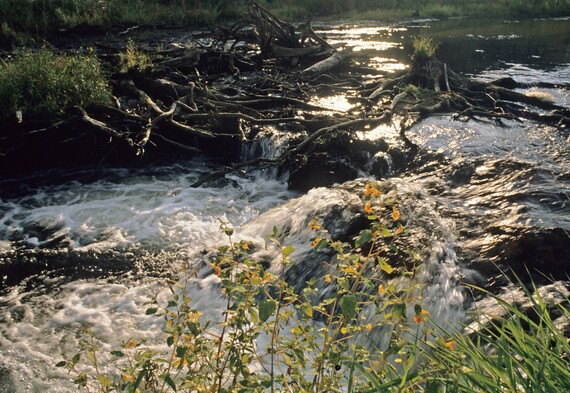 Photo Credit: Wisconsin DNR
The Tomorrow River Trail is a 29-mile rail trail that travels through scenic glacial terrain and farm country from Plover to just outside the village of Manawa in Waupaca County, while passing through the communities of Amherst Junction, Scandinavia and Ogdensburg. The western end of the trail connects to the Green Circle State Trail at Hoover Road in Plover.
Travelers will cross the Tomorrow River in Amherst Junction and will intersect with the Ice Age Trail in Waupaca County at Gillman Road.
There is a short one-mile gap in the trail at Amherst Junction and trail users will need to use local roads as the trail route. The eastern terminus of the trail in Waupaca County ends at Wolf Road. Users will need to use local roads for about 0.5 miles between the trail and the village of Manawa.
This trail is popular with bikers and equestrians in the warm months; both users need a state trail pass to ride. Self-registration stations are located along the trail.
For equestrians, there is a separate 14-mile horse trail alongside the limestone trail from Plover to the Portage/Waupaca county line. In Waupaca County, the horse trail is currently under construction. Horses should never be on the limestone trail except in posted areas where the two are shared. In areas where a separate horse trail is not complete, riders are allowed to use the south side of the limestone trail, providing they stay on the edge of the trail. Riders should follow the horse signs.
And, the trail isn't just for summer use – come back in the winter for snowmobiling.
The Tomorrow River State Trail has endpoints in Plover and Manawa. For more information about each section of the Tomorrow River State Trail, check out this article on TrailLink.
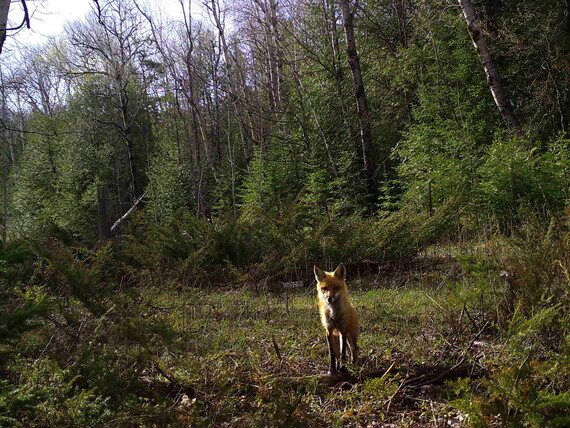 Photo credit: Snapshot Wisconsin
You may be starting to see red foxes out and about, like this one caught on camera at Potawatomi State Park. Did you know that red foxes can locate a sound within one degree of their true location? Their large ears provide them with excellent senses. A fox can hear a mouse from 150 feet away.
Red foxes are Wisconsin’s second-smallest member of the canid family and primarily eat smaller mammals like rodents and rabbits. A family of foxes can have a hunting range as small as one-quarter square miles. The more productive and diverse the land, the less range is needed.
This photo comes from Snapshot Wisconsin, a partnership to monitor wildlife year-round using a statewide network of trail cameras. The project provides data needed for wildlife management decision support. It is also a unique opportunity for individuals, families and students to get involved in monitoring the state’s valuable natural resources.
You can witness the biodiversity of Wisconsin safely from home and find out how to get involved at SnapshotWisconsin.org.
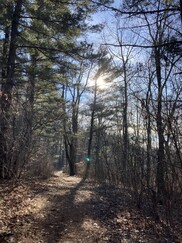
Hiking For Beginners
Kettle Moraine State Forest - Southern Unit
Sunday, April 30
1 - 3 p.m.
Hiking is a great way to enjoy the beauty of nature.
Come out to the Scuppernong Hiking Trails and join one of our rangers on a 2.5-mile guided hike. This hike is for beginners, but all are welcome. We will discuss gear, safety considerations and how to plan your own hiking adventure. Hiking boots are recommended.
Meet at S58 W35820 County Rd ZZ Dousman, WI 53118. A valid state park sticker is required. Questions? Call Forest Headquarters at 262-594-6200.
Photo Credit: Wisconsin DNR
|
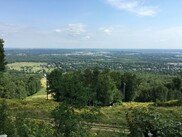
Natural Resources Foundation of Wisconsin Presents: Wausau Wayfarers Hiking Meet-up
Rib Mountain State Park
Saturday, June 17
11 a.m. – 3 p.m.
Join fellow Wayfarers (a natural resources focused young professionals group) to explore Wausau’s Rib Mountain – this billion-year-old hill is one of the oldest geological formations on earth. Enjoy a hike to take in the park’s spectacular views and explore its talus slopes and rare plants, while learning more the park and its natural history. Get to know fellow Wayfarers during a BYO picnic lunch afterward, and then we’ll head to nearby Bull Falls Brewery to enjoy a locally-brewed craft beer to end the day.
This program is free, though a Wisconsin state park and forest vehicle admission sticker is required for vehicle admission.
Plan to attend? Please RSVP by June 14 as registration is limited to 20 people.
Photo Credit: Wisconsin DNR
|
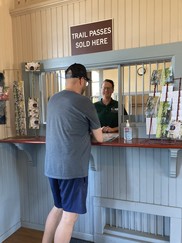
Work For Wisconsin State Parks
Applications are still being accepted for summer seasonal positions. Hurry – positions start soon.
Several areas of the state have openings for summer seasonal employees. In particular, if you know anyone in the areas around the Northern Highlands-American Legion State Forest, Yellowstone State Park, or in Door County, please spread the word.
Read more about open positions and the pay, hours and more information online. Applications are only accepted via the Wisc.Jobs website. To find all openings, search by agency and select Dept. of Natural Resources.
Photo Credit: Wisconsin DNR
|
When was the last time you hugged a tree?
Hug your favorite tree and share your photos on Instagram! Tag us with #OutWiGo!
|